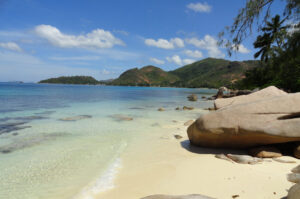
To protect this unique area, the Nature Conservancy joined with local villages and the Indonesian Park Authority to develop a long-term plan that would reduce destructive fishing practices and provide islanders with new economic opportunities.
Local people were hired to collect park entrance fees, which will be spent in the park to support management and develop a visitors’ center to draw more tourists. Concessionaires are also allowed to do business in the park for a fee. To prevent destructive fishing practices, operational support is supplied to patrols led by rangers as well as the Indonesian Navy, the police and the water police. Other efforts to provide alternative livelihoods include the promotion of deep-sea fishing far from fragile coral reefs, sea grass farming, souvenir carving, weaving, and tourism guide training. A fish culture center has been established where fish are hatched and then later transferred to local grow-out farms where they are raised to market-size and sold.
Monitoring efforts show that the reefs and fish populations are making a major comeback. However, local inhabitants are still more concerned with improving their standard of living than increasing biodiversity. Educational programs are making some headway, but ultimately alternative revenue streams are the only way to align local people with the mission of preserving the marine resources.
Since the launch of a new 25-year management plan in 2000, progress has been made on all fronts, but setbacks are common, and constant vigilance is essential if this amazingly rich marine habitat is to be saved.
Visit live-perc-wp.pantheonsite.io/psolutions.php for more information.


